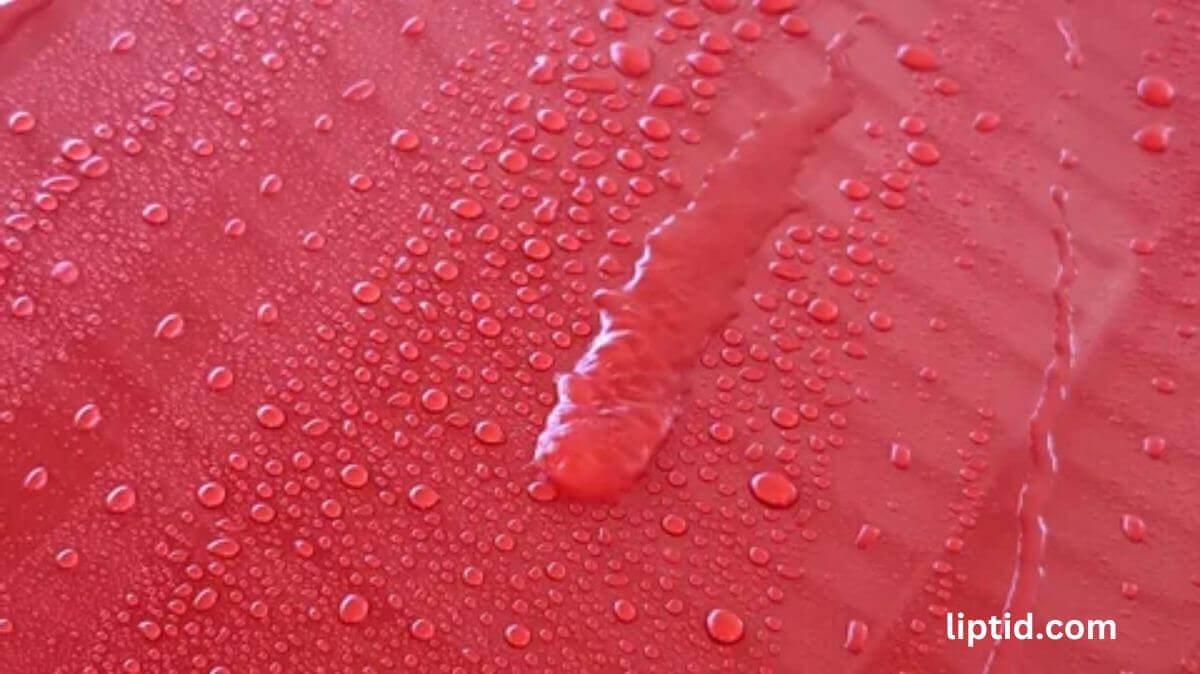Introduction
Have you ever watched droplets of water roll off a freshly waxed car or sparkling clean window? That mesmerizing phenomenon is known as water beading. It’s not just an aesthetic marvel; it reveals fascinating science at play. The hydrophobic effect creates these tiny beads that resist spreading out, giving surfaces a sleek look and keeping them cleaner for longer. But what exactly makes this happen? Let’s dive into the science behind water beading and explore how it impacts our lives in surprising ways. Whether you’re curious about your daily interactions with water or interested in enhancing surface protection, understanding the hydrophobic effect could change your perspective on something so common yet captivating.
The Science Behind Water Beading
Water beading is a fascinating phenomenon that showcases the unique properties of water. At its core, this occurs due to the interplay of cohesive and adhesive forces.
Cohesion refers to the attraction between water molecules. This strong bond causes them to stick together, forming droplets rather than spreading out flat on a surface. The result? Those lovely beads of water we often see glistening in sunlight.
On the other hand, adhesion describes how water interacts with different materials. When surfaces are treated with hydrophobic coatings, they repel water effectively. This repulsion enhances the formation of distinct droplets instead of a thin film.
Surface tension plays a crucial role as well; it acts like an elastic skin on the droplet’s surface. A higher surface tension creates more pronounced beads, making them appear larger and rounder.
Understanding these scientific principles sheds light on why some surfaces resist wetness so efficiently while others do not.
Factors Affecting Water Beading
The phenomenon of water beading is influenced by several key factors. One primary element is the surface texture. Smooth surfaces tend to allow more pronounced beading compared to rough ones, which can disrupt bead formation.
Another important factor is surface energy. Materials with low surface energy promote greater water repellency, leading to larger droplets that maintain their shape. Conversely, high-energy surfaces encourage spreading rather than beading.
Temperature also plays a role in this effect. Warm temperatures can enhance molecular movement, potentially impacting how water interacts with various surfaces.
Contaminants on the surface can significantly alter hydrophobic properties. Dirt or oils may create uneven interactions between water and the surface, reducing effective beading and causing unwanted wetting effects instead.
How to Achieve Maximum Water Beading
To achieve maximum water beading, start with a clean surface. Dirt and grime can disrupt the hydrophobic effect. Use a gentle cleaner to ensure that your surfaces are spotless.
Next, choose the right hydrophobic coating. Options range from sprays to specialized treatments. Make sure you follow the manufacturer’s instructions for application to get optimal results.
After applying the coating, allow it ample time to cure. Rushing this step could diminish its effectiveness. Patience pays off when trying to enhance water beading.
Regular maintenance is crucial too. Clean surfaces periodically and reapply coatings as needed for sustained performance. This will keep your surfaces repelling water effectively over time.
Experiment with different products if you’re not satisfied initially. Each material responds differently, so finding the perfect match can make all the difference in achieving stunning beads of water on any surface.
Also Read: Dead Weed: A Guide to Effective Removal Strategies
Benefits of Using Hydrophobic Coatings
Hydrophobic coatings offer a range of advantages that can enhance both the longevity and performance of surfaces. By repelling water, these coatings prevent moisture accumulation, reducing the risk of corrosion and degradation.
They also make cleaning easier. Surfaces treated with hydrophobic materials resist dirt and grime, allowing for quick wipe-downs instead of extensive scrubbing.
In addition to maintenance benefits, hydrophobic coatings improve safety. For instance, on glass or automotive surfaces, they enhance visibility during rain by promoting water beading and rolling off quickly.
Moreover, these coatings are versatile. They can be applied to various materials including fabrics, metals, and plastics. This adaptability makes them valuable in numerous applications ranging from outdoor gear to electronics protection.
The aesthetic appeal shouldn’t be overlooked; hydrophobic treatments maintain a clean look while providing essential protection against wear and tear.
Applications of the Hydrophobic Effect in Daily Life
The hydrophobic effect plays a vital role in various aspects of our daily lives. From the moment we wake up, we encounter surfaces designed with this principle in mind. Water-repellent fabrics have transformed clothing, making it possible to stay dry and comfortable even in unexpected downpours.
In the kitchen, hydrophobic coatings on cookware minimize sticking. This makes cooking and cleaning significantly easier. Imagine frying an egg without worrying about it gluing itself to the pan!
Automotive applications showcase water beading as well. Car manufacturers often use hydrophobic treatments on windshields for enhanced visibility during rainstorms.
Even smartphones benefit from this phenomenon! Many devices feature water-resistant designs that help protect against accidental spills or splashes.
These everyday uses highlight how understanding the hydrophobic effect can lead to more efficient products and improved experiences across various fields.
Conclusion
Water beading is a fascinating phenomenon that can be observed in various environments. Understanding the science behind it helps us appreciate its practical applications. The hydrophobic effect plays a crucial role, allowing water to form droplets rather than spreading out.
Several factors influence how water beads on different surfaces. From surface texture to chemical properties, each element contributes to the effectiveness of this natural process. By knowing how to manipulate these factors, you can achieve maximum water beading on your materials.
Utilizing hydrophobic coatings offers numerous benefits for both personal and professional use. These coatings can protect surfaces from moisture damage and reduce cleaning efforts significantly.
The implications of the hydrophobic effect extend into everyday life. Whether it’s in high-tech industries or simple household items, this principle enhances functionality and longevity.
Embracing the concept of water beading not only provides advantages but also opens doors to innovation across multiple fields.
